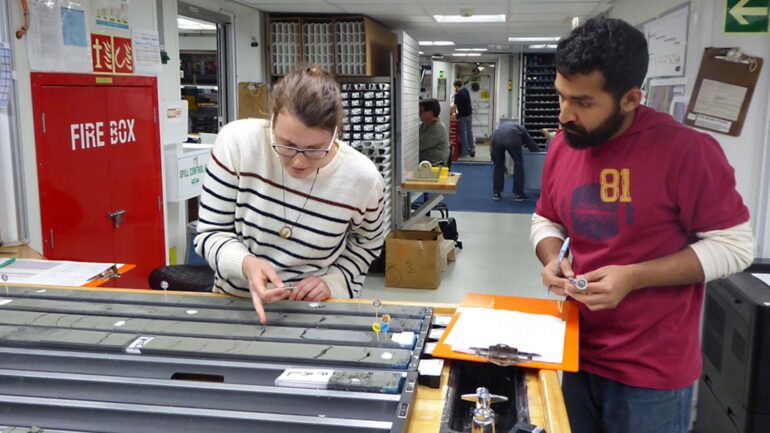Renaissance polymath Leonardo da Vinci demonstrated frictional forces slow down the motion of surfaces in contact. Friction, he determined, is proportional to normal force. When two objects are pressed together twice as hard, friction doubles.
“We see this principle with tectonic plate boundaries,” says Utah State University geophysicist Srisharan Shreedharan. “As surfaces slide against each other, we observe frictional properties, including frictional healing that describes the degree of fault restrengthening between earthquakes. However, we know little about how this phenomenon may affect future slip events, including earthquakes.”
He and colleagues Demian Saffer and Laura Wallace of the University of Texas at Austin, where Shreedharan was previously employed as a postdoctoral fellow, and Charles Williams of New Zealand’s GNS Science geoscience research institute, publish findings about ultralow frictional healing and slow slip events along the Hikurangi tectonic plate boundary in the Feb. 17, 2023, issue of the journal Science.
“Plate motion on shallow subduction megathrusts, like the Hikurangi Trench east of New Zealand’s North Island, occurs all over the world,” says Shreedharan, assistant professor in USU’s Department of Geosciences. “Our research examined the diverse tectonic slip modes, especially slow slip events, and focused on frictional healing.”
Slow slip events usually don’t cause great shaking and they generally release pent-up energy in a non-damaging way, he says.
“But in areas with clay-rich materials, such as those commonly found in subduction zones throughout the planet, frequent ‘slow motion’ slips may be more common than we think,” Shreedharan says. “We don’t yet know whether these slip events are more or less likely to place nearby populated areas at risk of deadly earthquakes and tsunamis.”
The behavior of the shallowest reaches of subduction zones during an earthquake determine the nature and size of tsunamis, he says. “Our nation’s west coast is vulnerable to large quakes, so it is important to understand how slip occurs on shallow plate boundaries.”
The USU geophysicist spent two months aboard the IODP research vessel JOIDES Resolution with a team of geoscientists and drilling engineers that drilled holes for monitoring sites along the Hikugangi Trench.
“To quantify seismic hazards, you need to collect data from sensors inside the boreholes,” Shreedharan says. “It’s a big undertaking, but the data is critical for monitoring events and improving early warning systems.”
More information:
Srisharan Shreedharan et al, Ultra-low frictional healing explains recurring slow slip events, Science (2023). DOI: 10.1126/science.adf4930. www.science.org/doi/10.1126/science.adf4930
Provided by
Utah State University
Citation:
Slow motion: Scientists investigate tectonic plate boundary earthquake behavior (2023, February 16)



